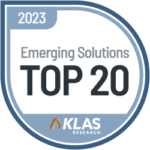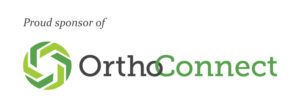Be honest: how often have you decided to cut down on marketing costs because you couldn’t prove that the investment is worth it?
Understanding and optimizing marketing efforts is crucial for the success of healthcare businesses. Cost analytics in healthcare marketing plays a vital role in achieving this by providing insights into the financial impact of your marketing strategies.
Cost analytics allows you to allocate your budget more effectively, measure performance accurately, and make data-driven decisions that sustain business growth and quality of service. More and more healthcare providers have been showing interest in measurable healthcare marketing and cost analytics, but the non-compliance of mainstream analytics tools with HIPAA regulations and patient privacy laws leaves us all reluctant to try.
Today, we’ll explore the importance and benefits of cost analytics in healthcare marketing, and go through a quick step-by-step guide on how to effectively implement it in the healthcare landscape, ensuring compliance with regulatory standards while maximizing marketing effectiveness.
Shall we?
Importance of Cost Analytics in Healthcare Marketing
Understanding the financial impact of your healthcare marketing strategy is the pillar of success in a competitive market. Cost analytics provides a clear picture of where your marketing dollars are going and how many dollars they bring back with them.
Leveraging cost analytics in healthcare marketing allows you to optimize your budget, make informed decisions, and ensure that every marketing campaign contributes to the overall growth and sustainability of your healthcare business.
Let’s highlight the key reasons that make cost analytics an indispensable tool for modern healthcare businesses.
Marketing Budget Optimization
Cost analytics in healthcare marketing allows you to allocate your marketing budget more effectively. By understanding the cost of patient acquisition through different channels, you can identify the most cost-efficient strategies and redirect resources from less effective campaigns.
Marketing Performance Measurement
Measuring the performance of marketing efforts is crucial for success. Cost analytics in healthcare marketing helps track the return on investment (ROI) of different marketing campaigns, allowing practices to see which campaigns are delivering the best results and how to optimize campaigns for better performance.
Data-Driven Decision Making
Making decisions in the dark isn’t a way to thrive in today’s data-driven environment. Cost analytics in healthcare marketing provides the data necessary to make strategic choices about marketing investments, leading to better outcomes, increased patient acquisition, and more efficient use of resources.
Competitive Advantage
Understanding and leveraging cost analytics in a comprehensive way is relatively new to healthcare marketing and comes with a significant competitive edge. Healthcare businesses that effectively analyze their marketing costs can get ahead of competitors who may not yet have the same level of insight into their marketing spend.
Benefits of Cost Analytics in Healthcare Marketing
Cost analytics in healthcare marketing provides detailed insights into the performance of your campaigns and channels, helping you allocate resources more efficiently, improve patient acquisition, and boost your marketing ROI.
Here’s how cost analytics can transform your marketing efforts and contribute to the long-term success of your healthcare business.
- Enhanced healthcare marketing ROI: by closely monitoring and analyzing costs, you can identify high-performing campaigns and channels that yield a higher return on investment.
- Improved patient acquisition: identifying which marketing efforts are most successful at bringing in new patients lets you focus on strategies that work best for attracting and retaining patients.
- Resource allocation: knowing the cost per acquisition for different marketing channels allows for more strategic investment, ensuring that your limited funds are directed toward the most productive activities.
- Operational efficiency: understanding marketing costs helps you streamline your operations, reduce overheads, and optimize processes for efficiency, ultimately lowering the overall patient acquisition cost.
- Insightful reporting: detailed performance insights allow you to continuously optimize your marketing tactics and strategies for lowered costs and improved results.
- Better financial planning: understanding the financial impact of different marketing activities enables more accurate forecasting and budgeting, leading to better overall financial health of your healthcare business.
- Customization and personalization: cost analytics reveals which segments of the patient demographics respond best to which types of marketing, helping you tailor your marketing efforts to specific audience groups, and improving engagement and conversion rates.
How to Perform Cost Analysis in Healthcare
Now that we’ve reviewed how cost analytics positively impacts your decision-making process, patient acquisition, and financial growth, let’s look into the practical steps that enable you to perform this process effectively.
Each step of the cost analytics process in healthcare marketing should be tailored to ensure compliance with regulatory requirements and the unique needs of the industry.
In that spirit, here’s a small guide to help you navigate this process effectively:
Step 1: Define Your Goals and Metrics
Before diving into cost analytics, you need to establish clear goals and identify the key metrics that’ll help inform the success of these goals.
Unlike the popular vanity metrics that tend to head the healthcare marketing reporting, cost analytics focuses on palpable KPIs:
- Patient Acquisition Cost: the cost of acquiring a new patient;
- Return on Investment (ROI): the financial gain from an investment compared to its cost;
- Patient Lifetime Value (LTV): the total revenue a patient generates over their entire relationship with your clinic;
- Conversion rates by channel: the percentage of people who become patients through different marketing channels;
- Average Cost per Lead (CPL): the average expense of generating a potential patient lead.
Having clear metrics will help you measure the effectiveness of your marketing campaigns and understand where to allocate your budget for maximum impact.
While there are established formulas for calculating each of these essential metrics, the most effective way to approach tracking is to rely on an automated healthcare marketing analytics tools that provide precise data without manual labor.
Step 2: Compliant Data Collection
Gathering data for cost analytics in healthcare marketing involves tracking different touchpoints and interactions patients have with your marketing campaigns. HIPAA regulations can make this process quite challenging, so it’s important to implement measures that ensure compliance:
Use HIPAA-Compliant Healthcare Marketing Tools
Choose marketing and analytics tools that are designed to comply with HIPAA regulations and have robust security measures that protect patient data.
Always Sign a Business Associate Agreement (BAA)
Work with vendors and third-party services that are willing to sign BAAs, obliging themselves to protect any PHI they handle on your behalf.
Anonymize Data
Wherever possible, use anonymized data to track marketing performance in order to maintain HIPAA compliance and reduce risk of exposing PHI.
Apply Robust Data Security
Ensure that all data is encrypted and stored securely and access is restricted to authorized personnel only.
Raise Awareness Internally
Train your staff on HIPAA regulations and the importance of data protection in healthcare marketing to minimize the risk of non-compliance.
Conduct Regular Audits
Take preventative measures to ensure that all processes and tools used for cost analytics in healthcare marketing comply with HIPAA requirements.
Step 3: Data Analysis and Interpretation
Once you collect the data, the next step is to analyze and interpret it to gain actionable insights (buzzword warning!). Here are some strategies you can apply to ensure you exploit the data to its maximum potential:
Apply Data Segmentation
Break down the data by different segments such as marketing channels, patient demographics, service lines or specific services. This’ll help you identify which segments are driving the most value and uncover how to improve the value of the most important segments.
Use Marketing Attribution
Rely on different marketing attribution models (such as first-touch, last-touch, multi-touch, and linear attribution) to understand the full impact of each marketing touchpoint on your patient acquisition efforts.
Conduct Benchmarking
Compare your metrics against industry benchmarks to understand the effectiveness of your campaigns and identify areas for improvements.
Step 4: Reporting and Actionable Insights
Effective reporting is the cornerstone of translating data into actionable insights.
Focus on comprehensive reports that highlight the performance of each individual campaign, cost-effectiveness of different channels, trends and patterns in patient acquisition, and recommendations for optimizing marketing strategies.
These reports are usually created by marketing analysts, but using healthcare marketing analytics tools can help you significantly reduce the manual workload and automate the majority of your reporting processes.
These tools also offer visualization features such as dashboards that helps present data in an easily understandable format for medical staff, stakeholders, and other important participants who aren’t necessarily proficient in data analysis.
Step 5: Ongoing Optimization
Cost analytics in healthcare marketing is an ongoing process. Even the fully optimized strategies won’t perform that way forever: external conditions are always prone to change, and in the constantly evolving and oversaturated digital environment, people get bored and overwhelmed and their preferences often change, making marketers reinvent the attention-grabbing strategies all the time.
Continuously monitor and refine your marketing strategies based on the insights you gain, and then implement A/B testing to experiment with different approaches and optimize your campaigns for better results.
Compliant Healthcare Marketing Analytics Technology: Are We There Yet?
Incorporating cost analytics into healthcare marketing isn’t just “a benefit”—it’s essential for any healthcare business looking to optimize its marketing efforts, maximize profitability, and incur scalable growth. By providing a clear picture of where money is spent and what return it generates, cost analytics empowers healthcare businesses to make informed decisions, allocate resources more efficiently, and achieve better financial and operational outcomes.
Performing cost analytics in healthcare marketing has proved challenging so far due to regulatory requirements; however, the market has been keeping up, and there are now compliant software options that help you track your KPIs, refine strategies based on data insights, and ensure that your marketing efforts are both effective and compliant.
SocialClimb’s healthcare marketing analytics platform allows you to perform comprehensive cost analytics: data anonymization and compliant integrations with your PM/EHR systems enable precise data collection, conversion tracking, and automated reporting of crucial marketing metrics.
Additionally, SocialClimb is the only platform on the market to currently offer compliant predictive targeting in healthcare, allowing you to maximize your marketing ROI and acquire high-value, at-risk patients for your most profitable services.
Despite the challenges the industry imposes, the benefits of cost analytics in healthcare marketing far outweigh the difficulties, especially with the right tools by your side, making it a vital component of successful healthcare marketing and business growth.











